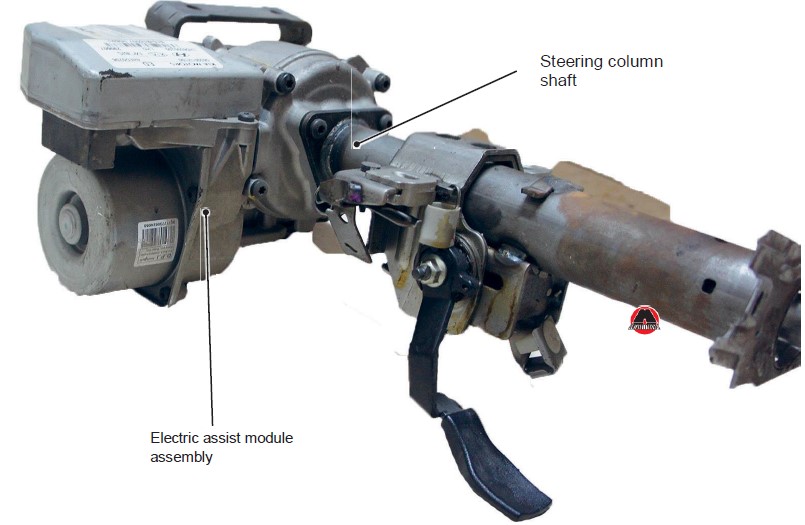8.2.3 Electromechanical power steering
Hydraulic drive of power steering is rather "picky": it is necessary to regularly monitor all connections in order to detect and eliminate leaks of the working fluid in time. In addition, there is a possibility of clogging of the working fluid. In case if it is necessary to remove the steering gear, there is a need to drain this fluid. And when filling the hydraulic drive with fresh liquid, it is necessary to perform operations for removing air from the system. Electromechanical power steering is quite another matter: there is no working liquid, branch pipes, pumping, and there is the electric motor and the control unit, which controls frequency of rotation of a steering wheel. The control unit also monitors the car's speed and steering angles. At certain speed values, it can send a signal to the electric motor in order to "clamp" or "release" the steering wheel.
Note
The terms "clamp" and "release" in relation to the steering wheel were invented by journalists. They m6дюБean an increase or decrease in the effort, which is required to turn the steering wheel, respectively.
There are several methods of installation of the electric motor of the booster:
- on the steering column;
- on a steering shaft gear wheel;
- on the steering gear.
Numerous tests of cars with the electromechanical power steering have proven that installation of the electric motor on the steering gear is the optimum method, because it helps achieving the best feedback from a steering.

Figure 8.10 Example of steering with electromechanical booster on the steering column.
Note
Feedback from the steering means connection with the road. After all, when we turn the steering wheel, the wheels turn, thus affecting the road. And while driving a lot of forces act on the wheel that are associated with its rolling. Thus, happens the transfer of all these forces from the road to the wheel and then to the steering wheel and is the feedback. This feedback is expressed mainly in a proportionally increasing force on the steering wheel, which depends on the steering angle and speed of the car. The term is most often used for cars with power steering.
In case if there is no feedback on the car with the power steering, then the force on the steering wheel does not change depending on the steering angle and the speed of the turn. When the car is stationary or moves slowly, the ease of turning the steering wheel is only for the better. However, when maneuvering at speed, the lack of proportionally increasing force on the steering wheel can play a nasty joke, because objective and subjective feelings will make it difficult to choose the only correct position of the steering wheel.



















2 MB